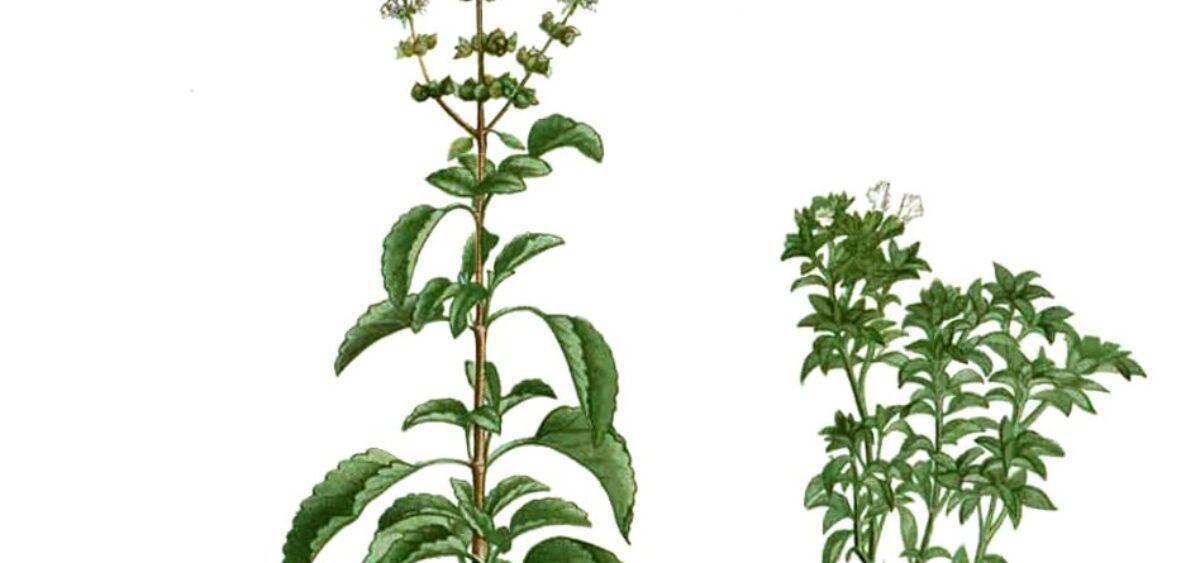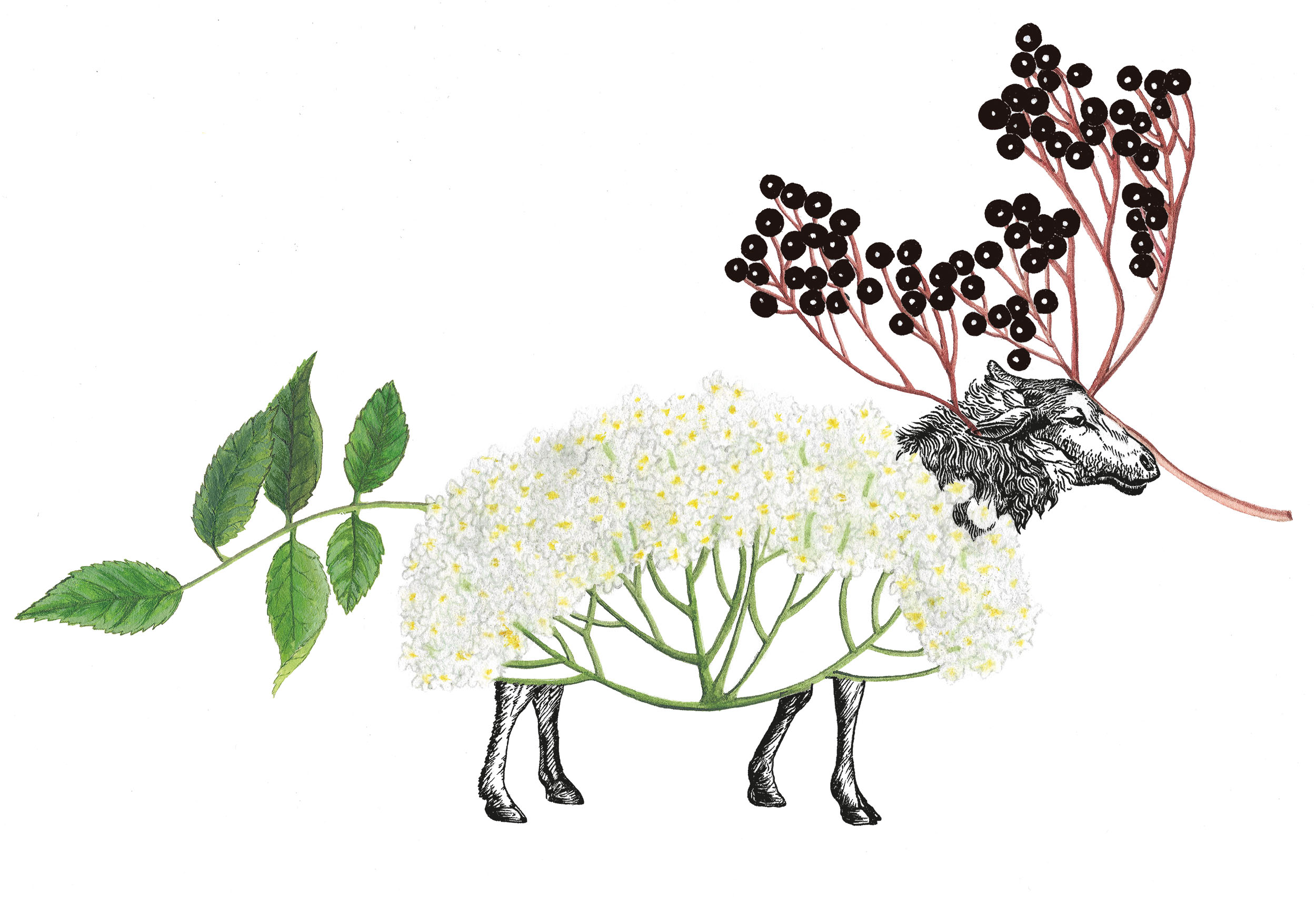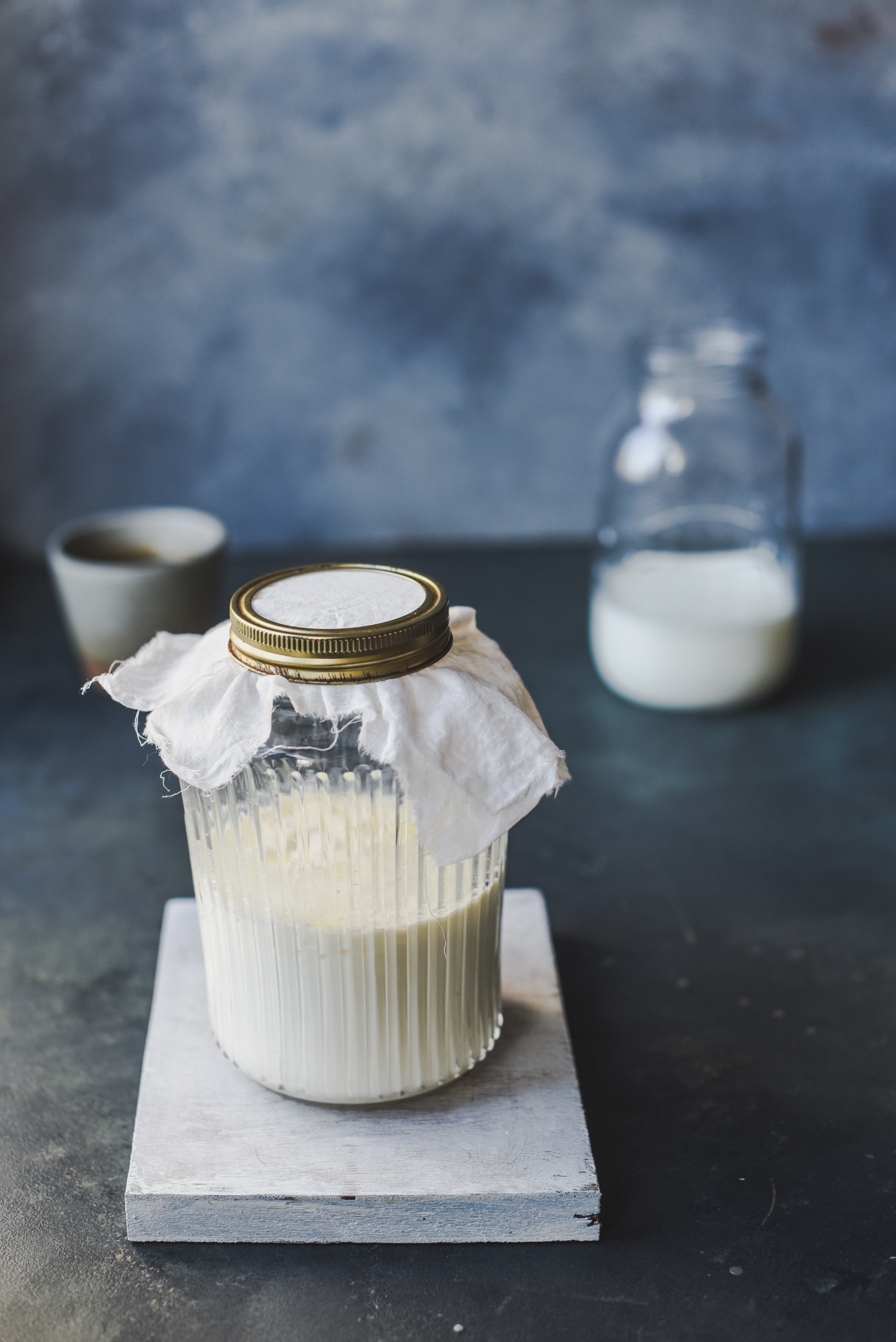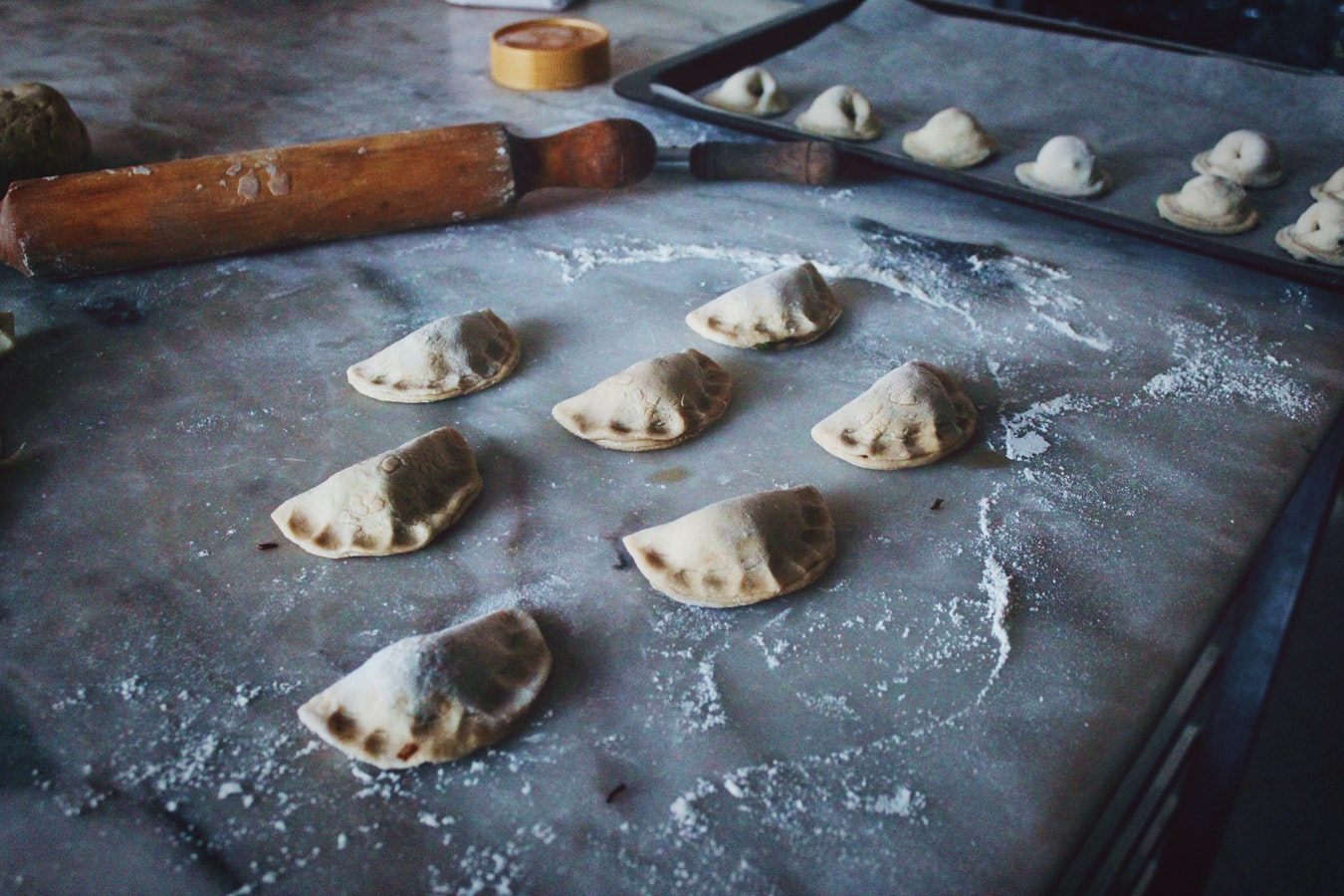
It arrived here via Central Africa and Southeast Asia. Its name most likely comes from the Greek noun basileus (meaning ‘king’), for it was thought that basil could only be picked by a reigning monarch.
In December 2013, the NASA space agency announced that in less than two years’ time they would be sending a special capsule to the Moon, containing samples of earth and plant seeds. The project, named Lunar Plant Growth Habitat, led NASA to excitedly ask on their web page:
“Can humans live and work on the moon? Not just visit for a few days but stay for decades? A first step in long term presence is to send plants. As seedlings, they can be as sensitive as humans to environmental conditions, sometimes even more so. They carry genetic material that can be damaged by radiation as can that of humans. They can test the lunar environment for us acting as a ‘canary in a coal mine’.”
Then talk turned to colonizing and harvesting the moon in a way that would satisfy human needs – feeding crops, creating usable oxygen and water supplies, while also improving the sense of crew well-being in space (the positive effects plants have on human moods have already been observed in the Antarctic and on the International Space Station). The three sample candidates NASA chose for extra-terrestrial planting were: basil, turnip and thale cress.
NASA’s Lunar Plant Growth Habitat project never got off the ground, and yet in January of this year the same idea was unexpectedly taken up by the Chinese space agency. News of their plans were reported around the globe. The Chinese lunar incubator had barely landed, carrying cotton, potato, thistle and gooseberry, as well as some yeast and fruit fly eggs, when a single cotton plant already began to sprout! This joyous news was soon followed by more, less cheery updates: the pale green plant died as soon as night fell upon the dark side of the Moon and the temperature fell to –170°C. Professor Xie Gengxin of Chongqing University, supervising the experiment, did not sound at all surprised: “Life in the canister would not survive the lunar night,” he declared. I weep for that one little cotton shoot, now that it has shared the sorry fate of Laika the dog, who also perished in space in the name of extraterrestrial enterprise. Though it was good, I think, that they spared any basil plants the effort of going.
Lush Green Plants
It is basil that I wish to talk about now. Basil has cosmic capabilities. Though we mostly know it from our dinner plates—as lush, green, glistening leaves covering sliced tomatoes, or as the key ingredient in Genoa pesto sauce—I would encourage everyone to grow their own, not just as a culinary ingredient. I especially encourage those who who do not have the dark side of the Moon or a garden at their disposal, and are forced to use window boxes instead.
This migrant plant—which arrived in Europe from Central Africa and Southeast Asia in the times of Alexander the Great, and reached Poland only around the 16th century—can be found in the summer growing by the shores of the Mediterranean Sea as a potted plant. I will issue an early warning, however. Anyone who comes close to it can truly fall for its charms, and will henceforth prefer to gaze upon it rather then consume it.
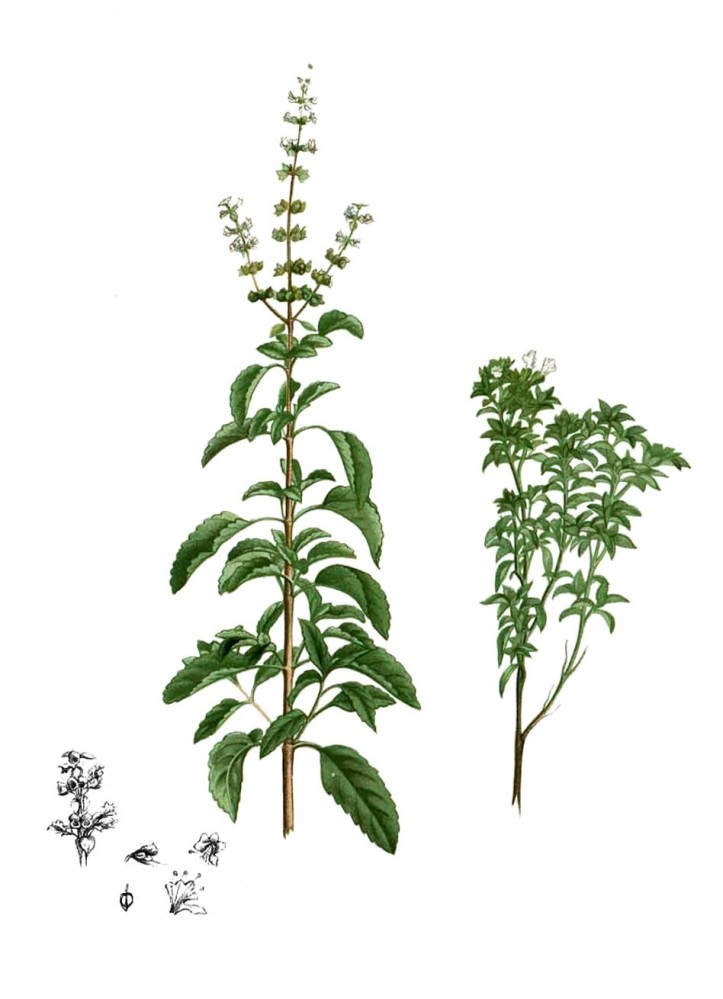
In the town of Eresos on the wild western side of the isle of Lesbos (which I visit every year), plant pots and window boxes used to grow basil can be found everywhere each summer: on the terraces of seafront tavernas, outside shops, in streets and on staircases, outside chapels and homes, usually in groups of several plants at a time. These lush green plants hum and flutter in the wind, releasing their aroma, for these are not the aroma-less mini-bushes sold in our supermarkets. Mediterranean basil can grow over a metre in height, and features a varied leaf shape from the tiny to the vast, though all popular varieties belong to the same species, Ocimum basilicum. Alongside this particular variety there are others, with one deserving of particular mention: Ocimum tenuiflorum, commonly known as holy basil, which shares with the rest of her sisters much of their rich and ancient symbolism.
In Poland—according to Wikipedia—the herb goes by many names, such as ‘fragrant basil’, ‘garden basil’, ‘common basil’, ‘balsam’, or else ‘Polish basilisk’. Its name most likely derives from the Greek noun basileus (meaning ‘king’), for it was thought that basil could only be picked by a reigning monarch. In France and Germany, it is still referred to today as a royal herb.
A Prop for the Living and the Dead
In ancient Rome, basil was used as an amulet to ward off the evil eye and the deadly breath of the monstrous cockatrice or basilisk. In Libya, it was thought to be an effective anti-venom for dealing with viper and scorpion attacks. From there, it was only a small step before crossing over to the dark side. Being as ambivalent as all things that are powerful are, in ancient Greece basil was thought of as connected with hate, and in medieval Europe it was sometimes thought of as a devilish herb.
This dark renown and legend surrounding basil did not stop it from also becoming a symbol of love. In Portugal, it is said that lovers give each other basil on the feast days of St. John and St. Anthony. It is also seen as a symbol of love on the island of Haiti. This is the role that took it to first-class literary fame in Giovanni Boccaccio’s The Decameron, where basil was related to a tragic love story in the southern Italian tradition. We are here speaking about the novella of Lisabetta de Messina (Day IV, Tale 5)—though in the Polish translation by Edward Boyé, the basil of the original was replaced with wasilki, otherwise known as cornflowers, for no apparent reason. Basil is after all simply basil, and cornflowers are cornflowers. This is all the more annoying since cornflowers have no place in a novel dripping with Sicilian temperament.
Listen for a moment: here is the titular Lisabetta, born of a wealthy merchant family, involved in a love affair with the beautiful and passionate Lorenzo, hired to work by her brothers who cannot forgive or accept her sinful and scandalous choice of lover, choosing to murder Lorenzo in secret. They bury the body far from home, and yet Lorenzo appears to his beloved in a dream and gives her the exact coordinates for how to find his grave. Lisabetta digs up his corpse, then somehow severs his head and places it in a vase. Having covered it with soil, she waters it with her own tears. Unfortunately, the brothers also take away this vase with basil growing from it, and Lisabetta instantly dies of despair, though it is not clear what it was she longed for more—the head or the herb, which since medieval times has been thought of as having healing properties for ailments of not just the body, but also the soul. This narrative thread involving Lisabetta and her basil pot would then go on to be revisited by other writers, including John Keats and Hans Christian Andersen.
Basil wreaths have been found in the tombs of Egyptian pharaohs. In India, basil was sworn upon when giving testimony in courts of law, for it is the holy plant of Hinduism, connected closely with Vishnu and Krishna. In the Greek Orthodox Church, as well as its Bulgarian, Serbian, Romanian and Macedonian counterparts, basil is added to holy water and placed at the feet of altars. Probably because, according to some apocrypha, it was said to have sprouted around Christ’s burial place after he rose from the dead.
In books about cookery and religion, we can sometimes find suggestions that basil was able to afford the dead safe passage into the afterlife. Such beliefs were held both in Europe, where a small green bush would be placed in the hands of the deceased, as well as India, where basil was placed in the mouth of the departed. There is a sort of metaphysical opposition between the great religions here, something I would like to deal with using King Solomon’s method: I wish to walk around with basil bushes in both my hands and my lips. Without waiting for my end. Both the Egyptians and the Greeks believed that basil opens the gates of heaven.
Improve the Mood
Even so, let us remain firmly rooted in reality. Basil’s healing properties feature in both Ayurvedic and Chinese medicine. Religious Jews were also of the opinion that basil helped lessen the suffering of fasting, seeing as its leaves are anti-inflammatory and anti-bacterial, helping improve digestion and mood. Essential basil oil has a potent aroma reminiscent of roots and flowers, as well as hinting at lemons and other citrus fruit, all helping to lift heavy spirits. It is also a honey plant, blooming in the very middle of summer, its flowers tending to be red, pink or white-yellow.
Basil seeds should be planted in May, but if you were to miss this window of opportunity, or lack the necessary patience, you need not lose hope—pre-planted basil bushes are also available at a later date. In a well-stocked gardening store, you should be able to find at least several common varieties of basil. Thus it requires no significant expense to establish a real basil jungle upon your balcony, in order to enjoy a Mediterranean summer regardless of location or season. This is all the more true seeing as basil is not prone to disease, and is good at warding off mosquitoes. It takes no great effort to look after: it likes the sun, dislikes strong winds, and likes to be watered around noon, but not too much (though during sweltering summer days, it is worth ensuring our basil queen receives a generous shower, so that she doesn’t faint from the heat). It will generously repay such care and attention.
We must, however, close on a painful note: tradition also suggests that we should pick off young basil leaves, in order to use them to enhance salads made of sweet August tomatoes. Is it polite to pinch a lady? Well now. That which is established is not always optimal, and there is nothing in the world that could not be changed. Conservative attitudes to life and leaves are very much overrated. In any case, I personally do not clip basil leaves. I value their company far too much. Without them, there can be no real summer . . .


